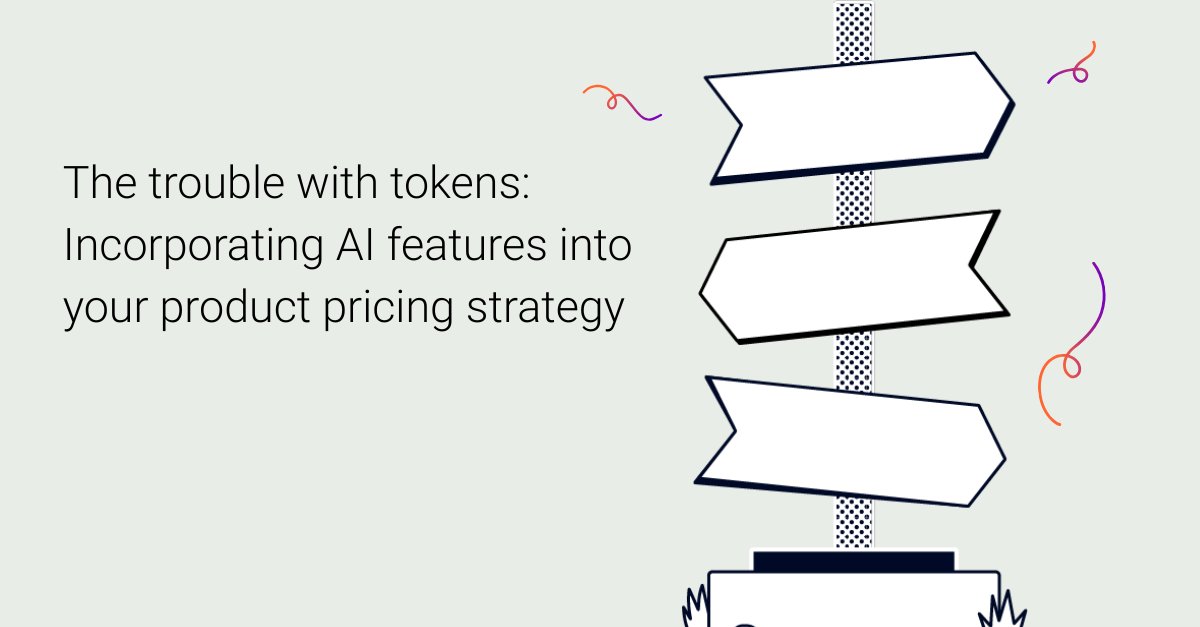Build pricing that scales with your AI product—and if pricing is slowing adoption, Salable can fix that.

Neal Riley
Published on 26 November 2025
The trouble with tokens: Incorporating AI features into your product pricing strategy
Struggling to price your AI product? Token-based models can be confusing and frustrating for users. Clear, flexible, and predictable pricing makes adoption easy and drives growth.
GenAI has created something we haven't really seen before—products that turn ideas into working digital value. What used to require teams, workflows, and production time can now be accomplished with a single good prompt. For product builders, this isn't just exciting technology—it's a brand-new commercial landscape they now have to price, package, and explain to customers.
The challenge is that building with LLMs doesn't behave like building with traditional software:
- Training and operating models are expensive, and these costs are ultimately passed down to the end product.
- Each model tokenises information differently, which means output, cost, and performance are rarely comparable.
- Prompt engineering massively changes the value per token, meaning two apps built on the same model can deliver radically different user outcomes.
- And when a GenAI product does land, growth is explosive—pricing must be stable enough for scale, but flexible enough not to block adoption.
This is why AI companies are wrestling not just with technology decisions, but with commercial strategy decisions.
Lovable is a great illustration of this shift: an AI-driven experience that doesn't just generate code — it provides users with a full pathway from idea to product. Elena Verna recently highlighted the difficulty of pricing this new category, particularly when companies rely on credit-based or token-based value units. At Salable, we encounter those same challenges every day when teams rely on tokens as their primary pricing lever.
Inconsistency and confusion
Today, "token" is one of the most overloaded terms in AI pricing. Customers think in outcomes–write me copy, build me an app, debug my code. LLM providers think in data packets. Vendors sit uncomfortably in the middle.
Even worse, tokens aren't fixed units of value:
- Different models tokenise differently.
- Input and output tokens often have different costs.
- Model pricing changes over time—sometimes rapidly.
When the cost unit is unstable, the price feels unstable. And unstable pricing slows adoption.
Adding value in the service
Most GenAI products aren't selling just model access. They're selling workflow, convenience, UI, infrastructure, support, and value-added features layered on top of the LLM.
So pricing gets harder. You're no longer just charging for tokens—you're charging for everything wrapped around them:
- What is the unit of value the user actually cares about?
- How does that unit map to business cost? Should pricing scale with usage, seats, outcomes, or something else?
Teams that price only the model often undersell the product.
Predictability through commitment
Usage-based pricing offers flexibility, which is great for experimentation, but terrible for predictability. Businesses need both:
| Flexibility | Predictability |
|---|---|
| Scale up/down as needed | Know what you'll spend each month |
| Pay only for what you use | Avoid surprise bills |
Successful AI vendors blend both. Commitments enable revenue reliability, usage caps protect customers from runaway spend, and together they create clarity, which increases willingness to buy.
Transparency is key
Customers only commit to what they can understand. When the unit of value is abstract, such as "credits" or "tokens", clarity becomes a feature, not a nice-to-have.
Good pricing UX means:
- Users are aware of what they're consuming as they consume it.
- Value is visible, not implied.
- A "token" means something intuitive, not mysterious.
A clear mental model fosters trust, and trust drives conversion.
There are options
We're still in the early stages of GenAI pricing evolution. Vendors are experimenting fast, and we're now seeing repeatable patterns emerge:
Token-linked models
- Burn-down: Buy credits upfront and use them over time.
- Burn-up + true-up: use first, reconcile later.
Credit as engagement
- Referral or promotion bonuses.
- Early-adopter reward pools.
Where the winners are emerging
- Prepaid blocks with better unit pricing.
- Team + usage hybrid plans with caps.
- Tier-based token pricing.
Successful models support a journey: from curious free users → committed teams → high-value enterprise.
At Salable, we help vendors design pricing and packaging that customers actually understand, trust, and enjoy buying. Because when a buying experience feels right, growth accelerates. When it doesn't, everything comes to a halt. The companies that win in GenAI won't just have the best models — they'll have the clearest way to buy, scale, and realise value.
